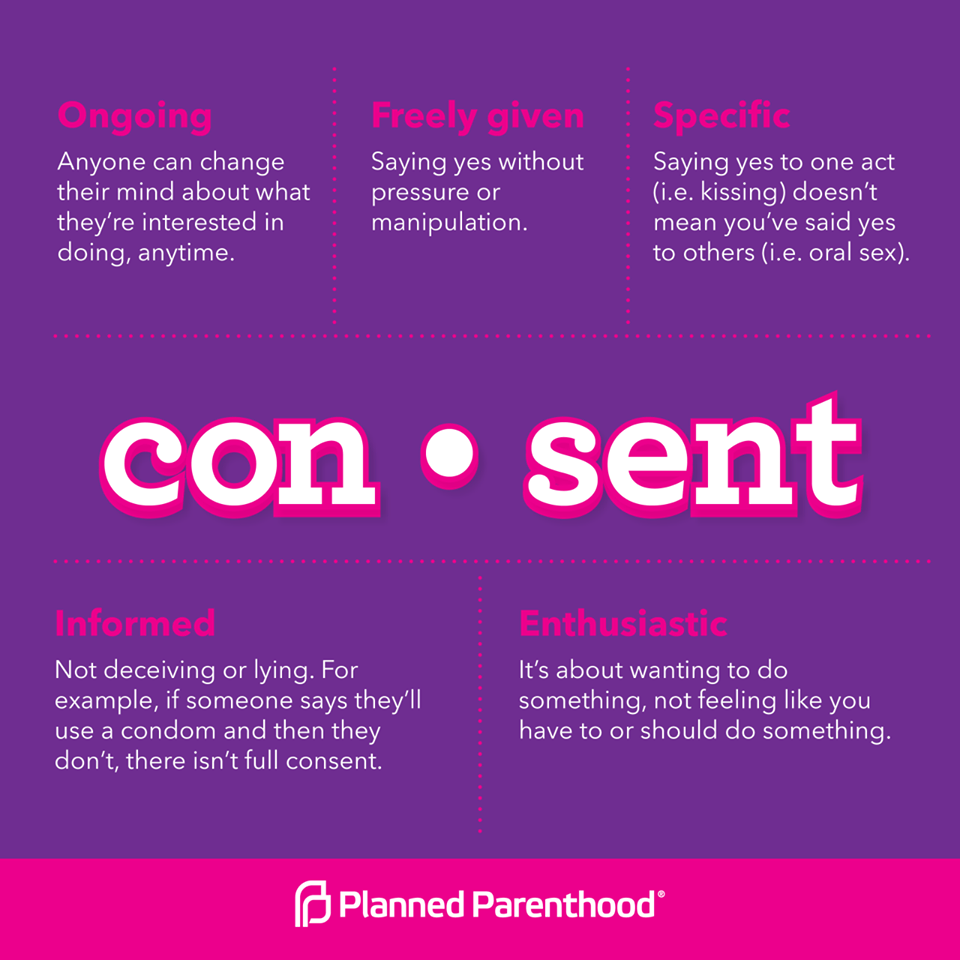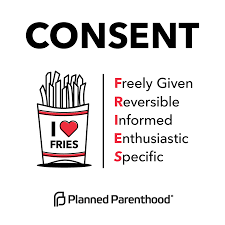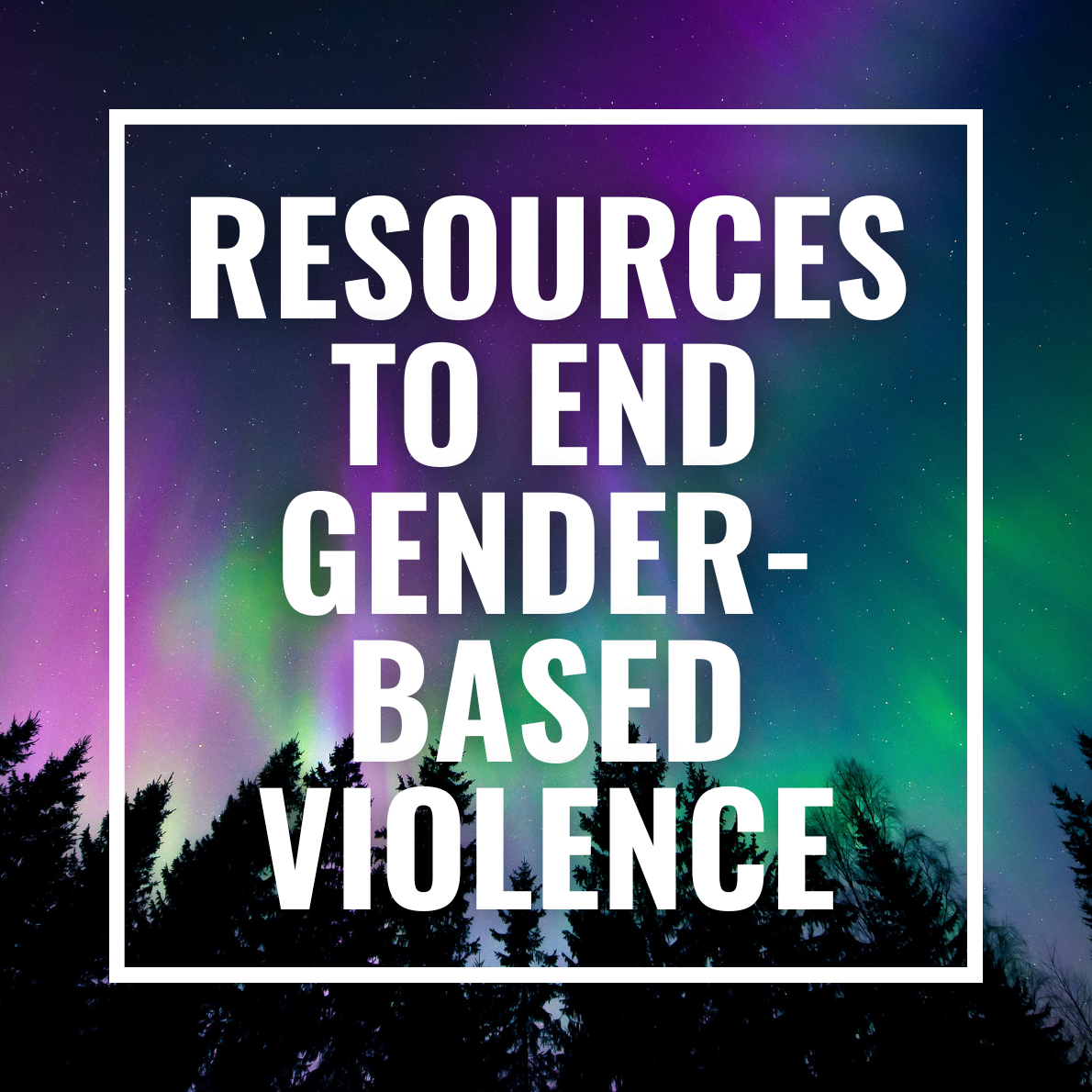Understanding Consent
Originally posted May 1, 2020 for Sexual Violence Prevention Month. Reposting as part of 16 Days of Activism Against Gender-Based Violence.
by Crickett Wilder
When I started working as a public educator over fifteen years ago, I would ask students in workshops what ‘consent’ meant. Not what consent meant to them, but just another word for consent or a definition. Overwhelmingly there would be silence. (Any high fives for me not using the crickets metaphor? No? Ok…)
Thanks to fabulous work of survivors, community activists, and educators, our cultural understanding of consent has exploded in growth in the last decade.
There is still a tremendous ways to go…
Almost all Canadians (96%) believe all sexual activities should be consensual yet only 1 in 3 Canadians understand what it means to give consent
According to Canadian law, consent should be both positive (e.g. saying yes, initiating and/or enjoying sexual activity) and ongoing (e.g. continues during the sexual activity). Only 1 in 3 (33%) survey respondents identified both of these traits as forms of consent
While most Canadians (97%) believe consent is required for sexual activity between people on a casual date or between new partners, 1 in 10 Canadians believe consent to sexual activity is not needed between long-term partners and spouses
1 in 5 Canadians between the ages of 18 to 34 believe if a woman sends an explicit photo through email or text, this always means she is giving consent to a sexual activity.
All statistics are from Canadian Women’s Foundation who also made this kick ass video about consent:
What Is Consent?
In Canada, consent is covered the criminal code, but that’s just a minimum and who really wants just the minimum? (Would you be excited to get paid the minimum wage???)
Consent is:
Ongoing: Anyone can change their mind about what they’re interested in doing, anytime
Freely given: Saying ‘yes’ without pressure or manipulation
Specific: Saying ‘yes’ to one act doesn’t mean you’ve said ‘yes’ to others
Informed: Not deceiving or lying. For example, if someone says they’ll use a condom and then they don’t, there isn’t consent.
Enthusiastic: It’s about wanting to do something, not feeling like you have to or should do something.
Text and images created by Planned Parenthood
Suddenly Everyone’s Talking ‘Bout It
Have you seen the tea video? EVERYONE was asking me this in spring of 2015. Five years ago this nearly three minute video was released and it was on everyone’s feed. I was PUMPED. Folks were finally jazzed about talking about consent.
The Consent Tea video is popular because it’s hilarious, accessible (talking about abuse, harm, and even fun consensual sex is truly hard in a culture that has a lot of shitty feels about bodies, sexualities, and feelings), narrated by a male sounding voice (men care about consent too!), and points out that consent is pretty simple - either you have it or you don’t. (I still get questions about how consent is sooooooo confusing and complicated, but they are thankfully petering out… Slowly…)
I am a Consent Tea vid fan. Don’t get confused. In it’s five years, it has been over EIGHT MILLION TIMES on it’s creator’s youtube channel alone. Working ten years four days a week at SACHA, I facilitated workshops for 5000 people a year and DREAM of having millions of people engaged in convos about what consent looks like everyday. It does a lot in it’s three minutes.
The tea video is a good starting place, but can’t be where our consent convo ends. It talks about consent like we only need it for penetrative intercourse. This is a trap because if we think consent is only need for one very specific sexual act when are we ever going to have a place to practice our consent skills or seen them modeled by folks we know?
The fab folks who made the original tea vid followed up with an even more fabulous Consent for Kids video, which I use in my workshops with folks of all ages because it gets into bodily autonomy and what a safe ‘no’ can look like.
What Asking For Consent Really Looks Like
We’ve gotten to the place where most folks are understanding that:
Image created by Sama Al-Zanoon @short.fuse for SACHA
Consent is essential
Asking with words is often the best way to get clear consent
We’ve still got lots of learning to do, so here’s some next steps to upping our understanding what clear consent communication can look like:
ASK! Words are best.
REALLY LISTEN! Anything other than a ‘heck yes!’ is a ‘no’.
MAKE SPACE FOR A ‘NO’. You don’t have to be excited to hear ‘no’. Using anger, pressure, or bargaining to get a ‘yes’ is not consent.
‘YES’ CAN CHANGE TO ‘NO’ AT ANY TIME.
Ways to Practice Consent Everyday
If we fall into the trap that consent is just for fun sexy-times, it leaves us not only with no place to practice consent (leaving us hecka awkward when it does come around to using consent during sexy-times) and also with no possibility models for what consent can look like.
There are some ways we can integrate consent into stuff we do everyday:
Asking for consent for stuff like hugs. Here’s a fab list of things outside of sexy-times you can practice fab consent skills.
When you meet someone new, ask them what pronouns they use. Then really listen.
Getting better at recognizing all the different ways no can be communicated. (Hint: Anything other than a super clear ‘HECK YES!’ is a ‘no’. No could look like:
“I’m not sure.”
“Maybe another time.”
silence
turns away
“My parents are coming home soon.”
“I guess… If you want to.”
Asking permission to take a someone’s photo. Asking permission before posting the photo on social media. This can be a great way to practice the ‘specific’ part of consent. Example: “Can I put this pic on Facebook?” “Sure, but please keep the post private so just our mutual friends can see it.”
Marginalized folks (women, poor folks, disabled folks, trans and non-binary folks, people of colour) have been socialized to be ‘nice’ and ‘kind’, which often translates to putting other peoples needs ahead of our own. Practicing saying ‘no’ with our friends we trust can be a great way for building confidence to setting boundaries with other folks in our lives.
Thank folks who are brave enough to say ‘no’. Have a nephew that is scared to hug a relative at a family dinner? Let them know that they don’t have to have anyone touch their body if they don’t want to. A high five or a wave is just as awesome.
What are some of your fave consent resources?
Crickett Wilder, DWS’ Program Coordinator, has been working in the gender justice movement for nearly two decades. Before moving to Dawson City, Yukon, Crickett worked as a public educator at SACHA, a deckhand on an environmental education tall ship, an advocate for migrant labourers, a telemarketer, a baker, a child care worker, and as a dog sled handler.


























